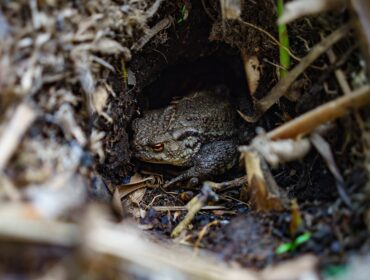 Turtles are some of the Earth’s oldest-living extant species; scientists believe that the first proto-turtles existed during the Triassic period of the Mesozoic era (known as the Age of Reptiles), more than 220 million years ago. Their body plan has changed very little over this immense period of time, and the formation of the ubiquitous shell is thought to have been a result of rib bones and bony extensions on their backbones fusing together to form a complete shield. These remarkable, if slow-going, reptiles existed on our planet long before lizards, snakes, or even crocodiles, and yet the survival of some species hinges solely on human conservation efforts.
Turtles are some of the Earth’s oldest-living extant species; scientists believe that the first proto-turtles existed during the Triassic period of the Mesozoic era (known as the Age of Reptiles), more than 220 million years ago. Their body plan has changed very little over this immense period of time, and the formation of the ubiquitous shell is thought to have been a result of rib bones and bony extensions on their backbones fusing together to form a complete shield. These remarkable, if slow-going, reptiles existed on our planet long before lizards, snakes, or even crocodiles, and yet the survival of some species hinges solely on human conservation efforts.
Indeed, despite their longevity on Earth, many species are classified as endangered by the International Union for the Conservation of Nature (IUCN). An astonishing 129 out of 207 turtle species are listed to be some level of endangered! Their threats come from a wide range of sources, including hunting and egg poaching, loss of habitat, entanglement in fishing gear, and pollution from oil spills and other toxins. Because the majority of the threats to species survival are created by humans, it is only logical to conclude that we must be the ones to intervene. That’s essentially what World Turtle Day is all about.
Falling annually on May 23, World Turtle Day was created to draw attention to and educate people about the world’s turtles and tortoises, and encourage them to get involved in their conservation. It was begun in 2000 by the American Tortoise Rescue (ATR), who has continued to sponsor the event every year since. ATR has rescued more than 1,000 turtles and 2,000 tortoises since its inception, and the creation of World Turtle Day allowed them to bring attention to the plight of turtles worldwide and the habitats that support them.
 Participation in World Turtle Day ranges from turtle costumes to rescuing turtles from hazardous places, conducting research, or volunteering for a turtle rescue or organization. Additionally, some turtle common sense and tips are given to help you conserve turtles on a daily basis:
Participation in World Turtle Day ranges from turtle costumes to rescuing turtles from hazardous places, conducting research, or volunteering for a turtle rescue or organization. Additionally, some turtle common sense and tips are given to help you conserve turtles on a daily basis:
- Never remove a turtle from the wild, unless they are sick or injured.
- Buy turtles from a reputable shop or breeder; don’t keep ones found in the wild.
- Never release a pet turtle into the wild. Contact your local Humane Society or reptile organization (if any) for advice.
- If you see a turtle crossing a road, pick it up and take it across the street in the same direction it was headed. If you turn it around, the turtle will likely return to the direction it was already going.
- Participate in beach and nature cleanups to keep their habitat clean.
- Entreat your legislators to preserve sensitive habitat or prevent offshore drilling.
Conservation of animals and nature is rarely difficult; as you see, there are some things we can do every day to actively contribute. Turtles and tortoises are some of Earth’s most interesting creatures, living long lives and traveling many thousands of miles across the world’s oceans and lands to fulfill their life’s purpose. It would be a shame to see them vanish on account of us simply doing nothing. Here are just 10 of the world’s most endangered turtles and tortoises that can be preserved with a little help from all of us!
Painted Terrapin

Kemp’s Ridley Sea Turtle

Radiated Tortoise

Flattened Musk Turtle

Hawksbill Sea Turtle

Yellow-Headed Box Turtle

Philippine Pond Turtle

Burmese Star Tortoise

Yangtze Giant Softshell Turtle

Red-Crowned Roofed Turtle





